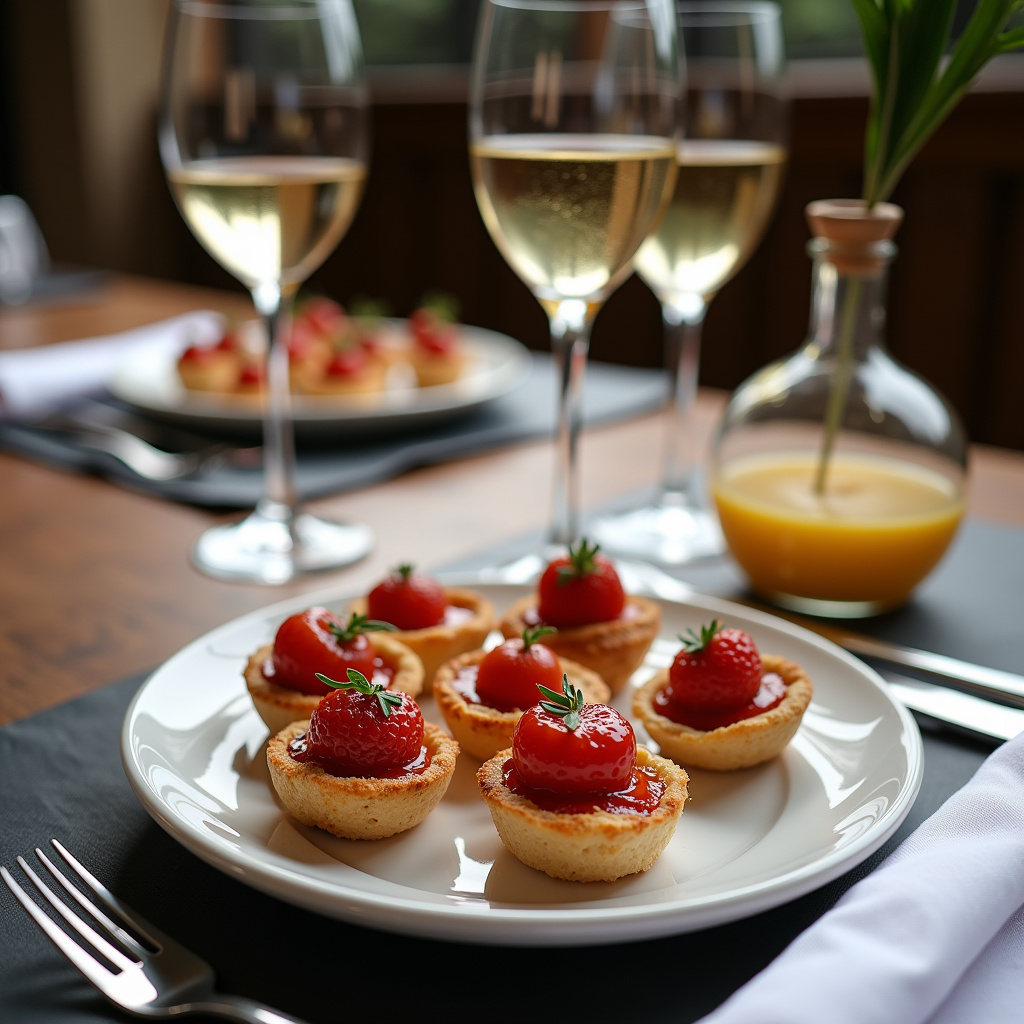How to Blend Themes Using Elegant Dinner Party Menus
So, you’re planning a get-together, and you want something more special than just "let's order pizza." You’re looking for elegant dinner party themes, but perhaps you also have a secondary, slightly quirky interest—maybe it’s 1920s jazz, or perhaps a deep love for Mediterranean flavors. The secret to truly memorable hosting lies in seamlessly blending these elements. This guide will walk you through the practical steps of weaving two distinct concepts together, creating a cohesive and sophisticated event, all while keeping an eye on your budget.
Prerequisites and Requirements: Setting the Stage
Before you start drafting your perfectly blended menu, you need a solid foundation. Think of this as gathering your ingredients before you start cooking. Having these elements clearly defined will prevent your theme blending from turning into a chaotic mess.
1. Define Your Core Themes
You need two distinct themes to blend. Be specific! Instead of "Paris" and "Holidays," try "Art Deco Paris" and "Winter Solstice."
- Theme A (The Foundation): This is usually your main aesthetic or formality level (e.g., elegant dinner party themes).
- Theme B (The Accent): This is the specific flavor profile, historical period, or niche interest you want to integrate (e.g., a specific type of cuisine or a themed cocktail party menus focus).
2. Establish Your Budget and Guest List
Even the most elegant affairs require planning. If you’re aiming for sophistication but are working with a tight budget, you’ll need to rely more heavily on cheap party decorations that look expensive.
- Checklist Time: Grab a free party planning checklist right now. Seriously, download one or make a simple spreadsheet. It keeps track of RSVPs, dietary restrictions, and shopping lists.
- Space Assessment: Are you working in a cramped apartment? Review your small space party layout ideas beforehand so you know exactly how many people can comfortably sit and mingle.

Step-by-Step Instructions: The Art of Thematic Fusion
Blending themes isn't about pasting two ideas together; it's about finding the overlap, the Venn diagram sweet spot where both concepts enhance each other. Follow these steps to achieve a harmonious result.
Step 1: Identify the Overlap (The "Why")
This is the most crucial step. Ask yourself: How can Theme A naturally lead into Theme B?
- Example Fusion: Theme A: Rustic Italian Villa. Theme B: A specific type of wine region (e.g., Tuscany).
- The Overlap: The focus shifts to authentic, seasonal ingredients typical of Tuscany, simplifying the decor to rely on natural textures (wood, linen) that fit both "rustic" and "Italian."
If you are planning something less formal, like low-cost birthday themes for a teen, the overlap might be easier. For instance, blending "Neon Arcade" (Theme B) with "Glow-in-the-Dark Dance Party" (Theme A) requires minimal effort beyond blacklights and bright plastic cups.
Step 2: Design the Menu Around the Blend
The menu is where the fusion shines brightest. Your dishes should nod to both concepts simultaneously. This is where your themed cocktail party menus become indispensable.
- Appetizers: Create small bites that represent the accent theme, served on tableware that reflects the foundational theme. Example: If blending "Moroccan Spice" (B) with "Black Tie Formal" (A), serve Harissa-dusted shrimp on delicate silver platters.
- Main Course: Aim for a dish that uses the flavor profile of Theme B but presents it with the formality of Theme A. A hearty shepherd's pie (rustic) can be elevated by using high-quality lamb and serving it in individual porcelain ramekins (elegant).
- Cocktails: Use your themed cocktail party menus to tell the story. A classic French 75 (A) can be infused with cardamom syrup (B).
Step 3: Integrate Decor Subtly

Resist the urge to hang pirate flags next to crystal chandeliers. Blending requires restraint. Focus on texture, color, and lighting rather than overt props.
- Color Palette: Choose a palette that serves both themes. If blending "Gothic Romance" (A) with "Deep Ocean Blues" (B), your palette becomes deep burgundy, black, and sapphire blue.
- Lighting: Lighting is the easiest way to set an elegant tone. Use dimmers, candles, and soft uplighting, regardless of your theme. If you need cheap party decorations, focus your limited budget on excellent lighting—it dramatically increases perceived elegance.
Step 4: Curate the Entertainment Experience
The activities should also reflect the fusion. This is particularly important if you are planning something interactive.
- Formal Events: If you are leaning toward sophisticated elegant dinner party themes, consider soft background music that subtly hints at the accent theme. For example, if your accent is a specific decade, play instrumental versions of music from that era.
- Interactive Fun: If you’ve gone the route of an interactive murder mystery party kits, ensure the plot or setting loosely ties into your foundational theme. A "Roaring Twenties" mystery fits perfectly into an Art Deco setting. If you are hosting a virtual event, look into virtual party game ideas that can be adapted to your dual theme.
Step 5: Craft Cohesive Invitations
The invitation sets the tone and manages guest expectations. It should hint at the blend without giving everything away.
- Wording: Use elevated language but include a small, intriguing clue about the accent theme. Example: "Join us for an evening of exquisite dining and refinement, with a whisper of the Orient."
- Design: Use the font and paper stock that reflects Theme A (elegance), but use a specific color or motif from Theme B.
Common Mistakes to Avoid
When blending themes, hosts often stumble into one of two traps: being too subtle or being too obvious.

- The "Kitchen Sink" Approach: Do not try to incorporate four or five themes. Two is the sweet spot. Trying to mash up teenager party themes at home (like superheroes) with a formal sit-down meal usually results in confusion, not creativity.
- Ignoring Practicality: Don’t plan a complex, multi-course menu that requires intense last-minute preparation if you are working from a last minute party planning guide. If time is short, simplify the menu items but keep the presentation elevated.
- Forgetting the Guests: If your theme is niche (like a specific historical event), ensure your guests have some familiarity or are clearly informed on the invitation. No one wants to feel lost! This is less of an issue for broad themes like retirement party themes for men, which usually have built-in context.
Expected Results: A Harmonious Success
When you execute the blend correctly, the result feels intentional, sophisticated, and surprisingly easy. Guests won’t feel like they walked into two different parties; they will feel immersed in a unique, layered experience.
Success looks like:
- Guests complimenting how perfectly the music choice fit the ambiance.
- Food pairings that are surprising yet delicious, tasting like an intentional culinary journey.
- A decor scheme that feels rich and textured, not cluttered.
If you’ve followed the steps, you’ve managed to elevate a standard gathering into something truly special, proving that you don't need elaborate diy party games for adults if the atmosphere itself is engaging.
Conclusion and Next Steps
Mastering theme blending is a powerful tool in the host’s arsenal. It allows you to personalize events deeply without sacrificing elegance or blowing the budget.
Now that you have the framework for blending two themes, challenge yourself to try a more complex fusion next time. Perhaps blend a concept with a specific texture (e.g., velvet and space exploration). Keep refining your free party planning checklist with notes on what worked and what didn’t. The more you practice this fusion, the more effortlessly sophisticated your parties will become!



